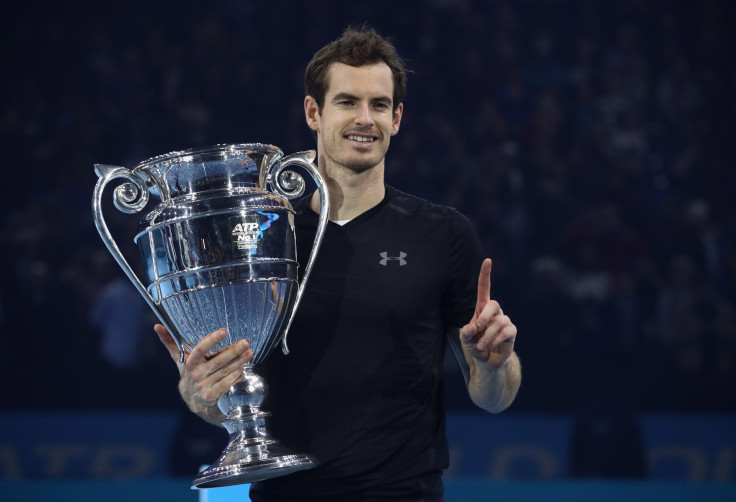Tennis News: Analysis of Rafael Nadal, Roger Federer, Andy Murray, Novak Djokovic In 2016

While the next generation in men’s tennis has yet to emerge, for the famed Big Four of the sport 2016 was a year of change. Most significantly, Andy Murray, the man who has so long been the fourth member of that exclusive club, finally became the main man, finishing the year ranked No. 1 in the world and dethroning the previously dominant Novak Djokovic.
It is the first time since 2003 that none of Djokovic, Roger Federer or Rafael Nadal has topped the rankings. For Federer, 2016 is the first year that he has finished outside the world’s top 10 since 2002. Here’s look back at each of their seasons.
Andy Murray
It would be very wrong to put Murray’s rise to No. 1 in the world all down to the presence of coach Ivan Lendl. At the same time, it is difficult not to divide his 2016 up into pre- and post-Lendl. For the first half of the year, it looked like being another season in which he would be the best of the rest, reaching finals regularly and picking up the odd title but unable to halt the domination of Djokovic. The Scot’s long-time rival got the better of him in the finals of the Australian Open and the French Open as well as at the Masters 1000 event in Madrid.
But after Lendl arrived ahead of the grass-court season Murray was almost unstoppable, producing the best tennis of his career. His subsequent record of 53 wins and just two defeats took him to eight titles, including a second Wimbledon title, a second Olympic gold and a first ever ATP World Tour Finals crown. Perhaps most rewarding of all for the 29-year-old, he reached the top of the rankings, something that looked unfeasible even just a few months ago.
Novak Djokovic
To an even greater extent than Murray, Djokovic’s 2016 was a year of two halves. He picked up right where he left off in 2015, as seemingly untouchable at the top of the men’s game. A record of 45-3 through to June included two Grand Slam titles, at the Australian Open and French Open, as well as three Master 1000 crowns.
Then came a shock third-round Wimbledon exit at the hands of Sam Querrey, from which, despite still enjoying results that almost every other player would cherish, he never recovered his dominance. Nagging injury concerns as well as personal issues were cited as he was knocked out at the first round of the Olympics, was beaten in the final of the U.S. Open by Stan Wawrinka and then finally, in the match to decide the year-end No. 1, was brushed aside by Murray in London. Earlier this month, he split with coach Boris Becker, only adding to the focus that is likely to be on his performances at the start of 2017.
Rafael Nadal
If 2015 was one of deep disappointment for Nadal, 2016 was one of immense frustration. In the spring, on the clay courts of Europe, the Spaniard looked to be getting back to somewhere near the form that took him to 14 Grand Slam titles. In Monte Carlo, he won his first Masters 1000 title in close to two years and followed it up the next week by taking the trophy in Barcelona. He went into the French Open looking like he had a real chance to regain his crown as the “King of Clay.”
But by that point he had already suffered a wrist injury that would worsen during the early rounds at Roland Garros, forcing his withdrawal and effectively ending his season. Although he won doubles gold at the Olympics, as well as reaching the semifinals of the singles, his efforts to rush back for Rio ended up costing him down the line. In October, he called time on his year.
Now at the age of 30, he will again have to answer questions about whether he can regain his physical sharpness as well as the confidence he had begun to rebuild before his injury. The decision to add former world No. 1 Carlos Moya to his coaching team suggests Nadal has far from given up returning to the Grand Slam winners circle.
Roger Federer
For the record 17-time Grand Slam winner, 2016 never really got going. Just days after reaching the Australian Open semifinals, where his run was ended by Djokovic for a third consecutive Grand Slam, Federer was preparing a bath for his twin daughters when he damaged his knee. Although he returned from surgery two months later, he never recovered his rhythm.
He still reached the semifinals of his favorite event at Wimbledon before falling to Milos Raonic in five dramatic sets, but he subsequently announced he was taking the rest of the year off to fully rehab his knee. The 35-year-old insisted that rather than it being a sign that his career is coming to an end, the decision to take off the rest of the year was a sign that he still very much believes he can compete at the very top and for a few more years to come.
© Copyright IBTimes 2024. All rights reserved.











